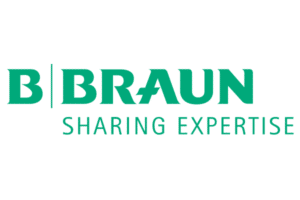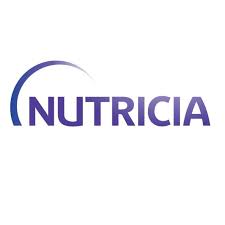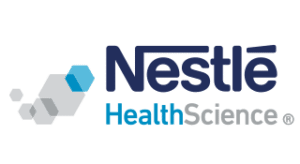By Hervé Chrostek, Lola Rivero – MNI Experts
Ageing, malnutrition and sarcopenia are significant concerns among older adults, as they pose a substantial burden on health, social, and aged-care systems. Nutritional care plays a crucial role in addressing this issue by providing personalised medical nutrition therapy to individuals who are unable to meet their nutritional requirements through regular food.
Malnutrition in older adults is highly prevalent, with a complex and multifactorial origin such as chronic diseases, decreased appetite, and difficulties in chewing or swallowing (known as dysphagia). The ageing population is the fastest-growing age group, and projections from the United Nations predict that by 2050, the number of adults aged 65 or over will be twice as large as the number of children under the age of five. This demographic shift underscores the need to address malnutrition in older adults, both to enhance their quality of life and reduce healthcare costs.
Yet, malnutrition in older adults goes unrecognised or is considered as a normal path of ageing, with no screening, monitoring or nutritional intervention follow-up.
Screening methods and intervention tools
The first step of all would be to ensure that older adults are regularly screened for malnutrition, where a risk is identified. This would be possible by applying systematic, standardised and harmonised malnutrition screening practice. Screening a patient for malnutrition takes only a few minutes. Healthcare professionals can be trained to perform malnutrition screening in a short period of time, using tools validated by scientific societies, such as indicated in the GLIM (Global Leadership Initiative on Malnutrition) developed by worldwide medical societies for clinical nutrition, a framework for diagnosing malnutrition providing for five practical indicators that can be used in routine clinical practice.
If considered appropriate by the medical team, then nutritional interventions shall be offered to patients who are malnourished or at risk of developing malnutrition. These may include medical nutrition. Medical nutrition is a nutrition-based treatment for many temporary and long-term health conditions, and it is typically available in the following forms:
– Oral Nutritional Supplements (ONS) such as ready-to-drink liquids, cream or powders,
– Enteral Tube Feeding (EN: via tube using the gastrointestinal tract), and
– Parenteral Nutrition (PN: intravenous feeding).
These products are designed to help patients of all ages address nutritional insufficiencies linked to specific medical diseases or conditions when they are unable to meet their daily requirements and are to be used under medical supervision for short-term, long-term, or even lifelong use.
Nutritional intervention for individuals, such as older adults at risk of malnutrition, should be promptly referred for comprehensive nutritional assessment to a trained multidisciplinary nutrition team. This is particularly important in specific situations such as cancer or surgical patients. Not addressing nutritional issues in older patients with cancer should be regarded as undertreatment.
Nutritional support may also be integrated into early supportive care programmes for all patients, considering individual-based evaluations, quality of life, life expectancy, and providing education to empower them in managing their nutrition.
A systematic approach
In the context of an ageing population, clinical guidelines recommend a systematic screening for malnutrition in all older adults, along with nutritional assessment and an individual nutritional approach. This approach aims to improve their treatment outcomes and decrease malnutrition-related complications, and also ultimately reduce the economic burden on healthcare systems.
ESPEN, the European Society for Clinical Nutrition and Metabolism, has established guidelines to emphasise the importance of individualised care and the need for institutions to support older adults in maintaining proper hydration and nutrition. If you want to know more about the ESPEN guidelines on nutrition and hydration for geriatrics you can check the ESPEN website here or have direct access to the guideline by downloading the ESPEN Guidelines App for free.
As we mark the International Day of Older Persons, addressing ageing and malnutrition takes on greater urgency. With around 1 in 3 seniors affected, whether in care homes or living independently, malnutrition is often dismissed as a normal aspect of ageing. It is essential to recognise and tackle this preventable issue to ensure older adults maintain their health, dignity, and independence.
References:
– Cederholm T, Barazzoni R, Austin P, et al. ESPEN guidelines on definitions and terminology of clinical nutrition. Clin Nutr. 2017;36(1):49-64. doi:10.1016/j.clnu.2016.09.004.
– Volkert D, Beck AM, Cederholm T, et al. ESPEN guideline on clinical nutrition and hydration in geriatrics. Clin Nutr. 2019;38(1):10-47. doi:10.1016/j.clnu.2018.05.024.
– Arends J, Bachmann P, Baracos V, et al. ESPEN guidelines on nutrition in cancer patients. Clin Nutr. 2017;36(1):11-48. doi:10.1016/j.clnu.2016.07.015.
– Bischoff SC, Austin P, Bozzetti F, et al. ESPEN guideline on clinical nutrition in surgery. Clin Nutr. 2017;36(3):623-650. doi:10.1016/j.clnu.2017.02.013.
– Kreymann KG, Berger MM, Deutz NE, et al. ESPEN Guidelines on Enteral Nutrition: Intensive care. Clin Nutr. 2006;25(2):210-223. doi:10.1016/j.clnu.2006.01.021.
– United Nations, Department of Economic and Social Affairs, Population Division (2019). World Population Ageing 2019: Highlights (ST/ESA/SER.A/430).
– Correia MI, Hegazi RA, Higashiguchi T, et al. Evidence-based recommendations for addressing malnutrition in health care: an updated strategy from the feedM.E. Global Study Group. JAMDA. 2014;15(8):544-550. doi:10.1016/j.jamda.2014.05.011.
– Bauer JM, Pattwell M, Barazzoni R, et al. Systematic nutritional screening and assessment in older patients: Rationale for its integration into oncology practice. EJC. 2024; 209,114237. doi:10.1016/j.ejca.2024.114237.
– Suominen MH, Sandelin E, Soini H, et al. How well do nurses recognize malnutrition in elderly patients? Eur J Clin Nutr. 2009; 63(2):292-296.
– Kaiser MJ, Bauer JM, Ramsch C, et al. Frequency of malnutrition in older adults: A multinational perspective using the Mini Nutritional Assessment. J Am Geriatr Soc. 2010; 58(9):1734-1738.
– Lelovics Z, Bozo RK, Lampek K, et al. Results of nutritional screening in institutionalized elderly in Hungary. Arch Gerontol Geriatr. 2009; 49(1):190-196.
– Parsons EL, Stratton RJ, Elia M. An audit of the use of oral nutritional supplements in care homes in Hampshire. Proc Nutr Soc. 2010; 69








